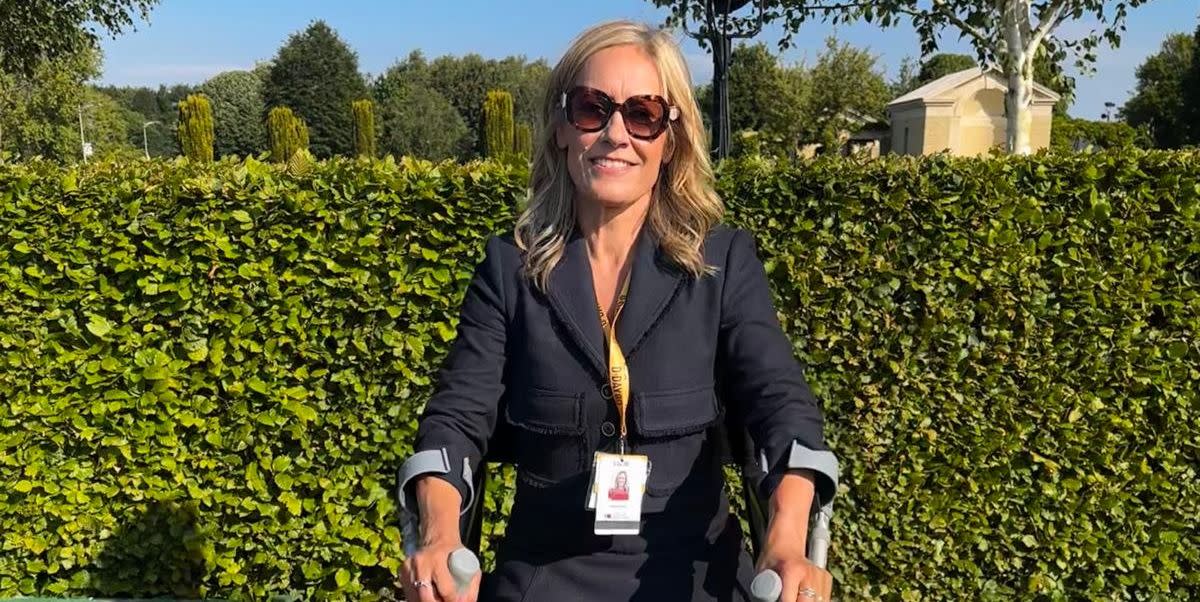Raworth on the Run: When injury strikes, take a lesson from the elites

I am flying through Canary Wharf. The 20-mile marker is almost here. I’ve trained hard for this London Marathon. Sub-3:30 is on the cards, if I keep pushing. And then it goes. My ankle, that I knew wasn’t quite right, suddenly gives way. I limp on for two miles, swallow paracetamol, try to run. But the pain is too much and, finally, I give up. My first marathon DNF.
An X-ray and MRI scan reveal it was the right thing todo. No running for six weeks, says the consultant. In fact, no exercise at all. No cycling. No gym. Limited walking. Keep the weight off it, I’m told. ‘Is swimming okay?’ I ask, aghast. ‘Only if you don’t use your legs,’ he replies. I leave in a daze. It has been years since I was last injured and forced to rest. Running is ingrained into my life. It’s how I clear my mind, get rid of any stress. I start mentally deleting the races I’ve booked – a mountain ultra, an Isle of Wight half. It feels devastating. But if I’m struggling, how hard must it be for elite runners when they suddenly find themselves dealing with injury?
I call ‘Lockdown Runner’ turned Olympian Rose Harvey, who’s about to represent Team GB in the marathon at Paris 2024. She was out for three months last year, after being hit by a car that pulled out of a drive as she was running past. ‘How on earth do you deal with it?’ I ask.‘Injury is mentally tough,’ she says. ‘But rehab and recovery is an important part of training. If you do it properly, don’t rush it, you can come back better, stronger, than before.’ Which is exactly what Rose did last year with a 2:23 PB at the Chicago Marathon and a ticket to the Olympics.
Eilish McColgan, the three-time Olympian and champion distance runner, has been on a much longer journey back from injury. I’ve watched her cross-training, aqua jogging and anti-gravity running since a knee injuryf orced her out of her marathon debut at London 2023. ‘Staying positive is one of the biggest things,’ she says.‘Of course, there are going to be times when that falters. But it’s how you pick yourself back up and keep going that becomes a runner’s greatest asset.’
Her first major injury was in 2011, when she broke her foot in a Diamond League steeplechase race in London. ‘It required surgery, five screws and a metal plate – the surgeon told me I’d struggle to compete at elite level, but could run as a hobby. I was heartbroken. But I was young and wouldn’t take no for an answer.’ As we now know, she was right not to. Eilish wrote a diary every day that helped her to see the small improvements, like wiggling her big toe for the first time or being able to walk without crutches. She says it was useful to look back and see the progress she’d made. ‘Now, when I stand on the start line of any race, it feels good to know I’ve overcome a lot to be there, and it feels even better when it finally comes together.’
I am left feeling humbled and moved by Eilish and Rose. A couple of months off for me now seems like nothing at all. ‘You’ll be back before you know it,’ Rose laughs. ‘Enjoy yourself! Most injuries are just a lack of strength somewhere, a bit of an imbalance. Get ready to strip it all back, strengthen what wasn’t strong enough, and you’ll be off again.’
So it’s feet up for me. Plenty of downtime, family and friends. And some parkrun volunteering, so I can still cheer everyone else on.
You Might Also Like


